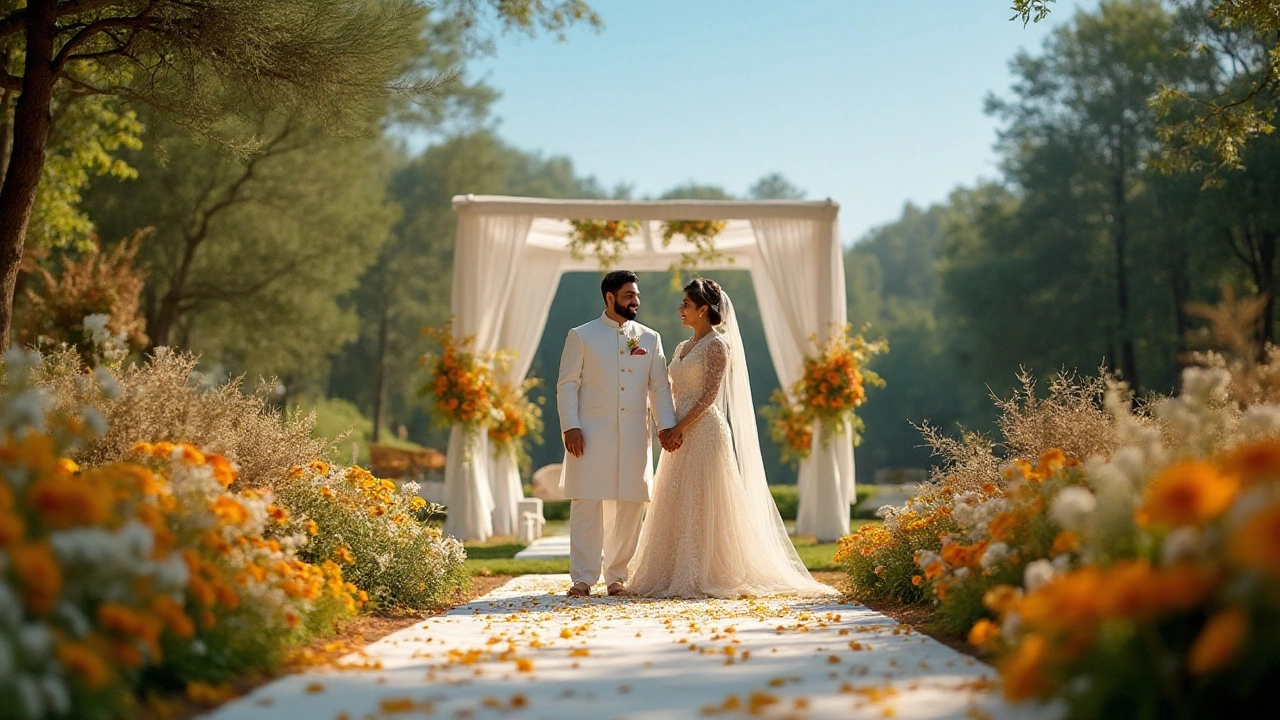Simple Wedding: Easy Tips & Trends
When talking about simple wedding, a style that trims excess, focuses on meaningful moments, and keeps costs low. Also known as low‑key wedding, it aims to reduce stress while still feeling special. Many couples choose this route to stay true to their vision without blowing their budget. Below you’ll find the core ideas that tie the whole concept together, and a peek at what the posts below will cover.
Key Elements of a Simple Wedding
First up, the wedding budget, the financial plan that guides every decision from venue to flowers. A clear budget lets you allocate just enough for priorities like great food or memorable photos, while cutting back on fluff. Think of it as the foundation: without it, plans can quickly spiral. Real‑world couples often start with a spreadsheet, then lock down the biggest costs before adding extras.
Next, consider wedding photography, the service that captures the day’s moments for a lifetime. Even a simple ceremony deserves beautiful images, so deciding whether to hire a pro or rely on a skilled friend is crucial. Pros usually edit a curated set of photos, focusing on quality over quantity, which aligns with a minimalist approach. Knowing what to expect from a photographer helps you budget wisely and avoid surprises.
Etiquette is another pillar, and wedding etiquette, the set of customs guiding invitations, RSVPs, and guest interactions keeps the day running smoothly. Simple doesn’t mean sloppy; clear communication about dress codes, timing, and who pays for what prevents awkward moments. For instance, understanding the “M” on RSVP cards or the order of names on invitations can save confusion and keep the vibe relaxed.
Color plays a subtle but powerful role. The wedding color, the palette that ties décor, attire, and flowers together can set the tone without overwhelming the budget. Soft neutrals, muted pastels, or a single bold accent often achieve a sophisticated look for less. Choosing a versatile hue lets you reuse décor pieces and keep the visual flow consistent from ceremony to reception.
Timing is the hidden glue that makes a simple wedding feel effortless. Build buffer periods between events, plan a relaxed timeline, and add mindful moments like a short meditation or a quick gratitude circle. These small pauses let you and your guests breathe, turning a packed day into a series of enjoyable experiences rather than a frantic rush.
DIY vs. professional services is a common crossroads. While handcrafted décor can add personality, remember hidden costs: supplies, time, and possible mistakes. Weigh each decision against its impact on your overall vision and budget. For example, a DIY flower arrangement might save money, but hiring a florist for a single centerpiece could free you up to enjoy the day more fully.
Sharing costs with family or the bridal party often eases financial pressure. Topics like who pays for makeup, transportation, or a wedding car can be solved by open conversations early on. Clear agreements prevent resentment later and keep the focus on celebration rather than spreadsheets.
Guest count directly influences venue size, catering, and even dress code expectations. A 120‑person wedding, for instance, can feel intimate with smart seating layouts and thoughtful flow. Understanding how numbers affect each budget line helps you make informed choices without compromising the experience.
All these pieces—budget, photography, etiquette, color, timing, DIY decisions, cost sharing, and guest count—interlock to create a cohesive simple wedding plan. In the articles that follow, you’ll find deeper dives into each area, from real‑world budgeting hacks to the meaning behind wedding traditions. Ready to explore practical tips and fresh ideas? Let’s jump into the curated guides below and start shaping your stress‑free celebration.
Discover how to plan a wedding that focuses on simplicity and intimacy, perfect for couples who prefer a low-key celebration. This guide highlights the benefits of smaller weddings, provides tips for creating a personal experience, and explores how to keep entertainment low-pressure but memorable. From guest list management to budget-friendly ideas, find practical advice for making your special day uniquely yours without stress.
